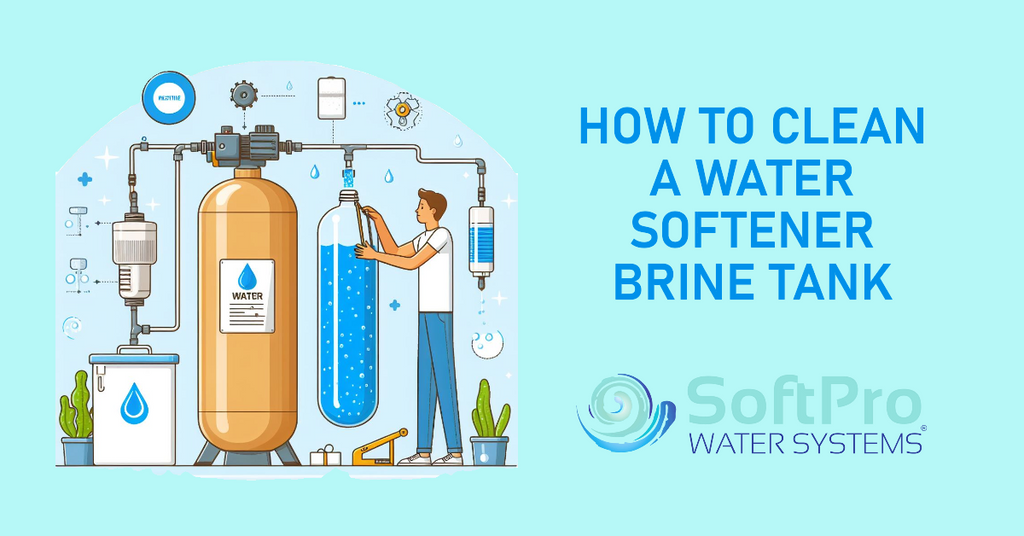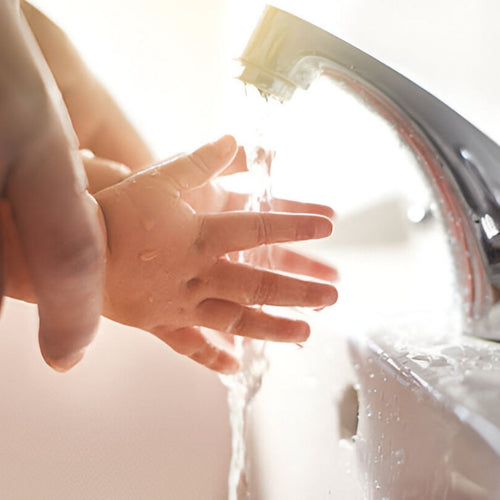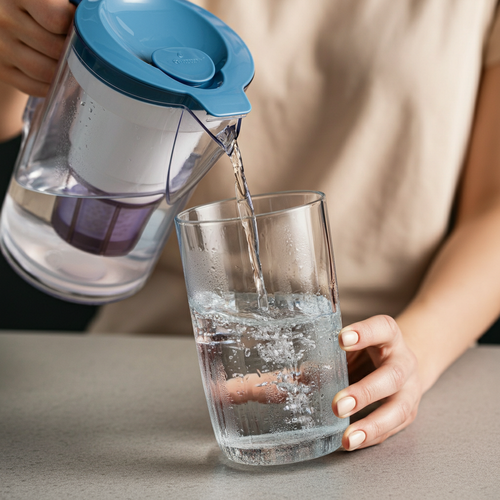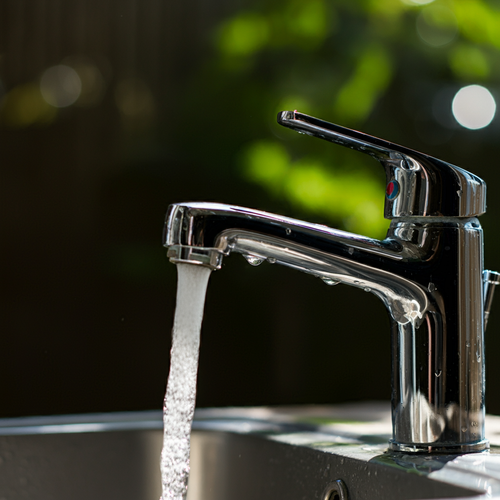Cleaning your water softener's brine tank is essential for maintaining optimal performance and preventing hard water problems. A dirty brine tank can lead to salt buildup, mold growth, and reduced effectiveness in softening your home's water.
Your water softener relies on a brine tank to create the concentrated salt solution (brine) that regenerates the resin beads responsible for removing hardness minerals. Over time, debris, salt residue, and even mold can accumulate in the brine tank, hindering its function. Regular cleaning ensures the brine solution remains effective, and your water softener consistently delivers soft, mineral-free water.
Understanding the Importance of Brine Tank Cleaning
A dirty brine tank is more than just an eyesore; it directly impacts your water softener's efficiency and your home's overall water quality. Here's why cleaning matters:
- Reduced Softening Capacity: Salt buildup, especially salt bridges, prevent the formation of a concentrated brine solution. This means your resin beads might not be fully regenerated, leading to hard water breakthrough (spotty dishes, less lathering soap).
- Increased Risk of Mold: A damp environment with leftover salt creates ideal conditions for mold growth, leading to potential odor and health concerns.
- System Strain: Buildup forces your water softener to work harder, potentially shortening its lifespan and causing unexpected breakdowns.
- Diminished Salt Efficiency: If the brine solution isn't made correctly, you may notice salt not dissolving properly, leading to more frequent refills and wasted salt.
Consequences of Not Cleaning
- Return of Hard Water Problems: You might experience dry skin, dull laundry, soap scum, and scale buildup in your plumbing and appliances.
- Costly Repairs: Neglecting the brine tank can lead to more extensive water softener malfunctions requiring professional intervention.
- Potential Health Concerns: In severe cases, mold growth in the brine tank could become a potential health issue, especially for those with respiratory sensitivities.
Proactive Maintenance is Key
Think of cleaning your brine tank as preventative maintenance for your water softener. Addressing buildup and potential mold issues proactively ensures your system delivers the soft water benefits you expect and protects your investment for the long term.
Pre-Cleaning Preparation
Before tackling the actual cleaning, taking a few preparatory steps will streamline the experience and protect your water softener system:
- Safety First: Turn off the water supply to your water softener and put it into bypass mode. This prevents accidental water flow and potential electrical hazards if your model has electronic components.
-
Gather Your Supplies: Have the following ready:
- Dish soap (mild, non-abrasive)
- Bleach (optional, for severe mold or odor)
- Protective gloves
- Cleaning tools (long-handled brush, sponge, wet/dry vacuum if available)
- Fresh water softener salt (the type recommended by your system's manufacturer)
- Choose the Right Time: Ideally, clean your brine tank when the salt level is low. This makes it easier to remove and handle.
What to Expect
You may encounter salt residue, solidified salt at the bottom (a salt bridge), and potentially mold growth, especially if the tank hasn't been cleaned in a while. Don't worry; the step-by-step cleaning guide in the next section will cover how to address these issues safely and effectively.
Important Note: Always consult your water softener's owner's manual for any specific instructions or precautions recommended by the manufacturer.
Step-by-Step Cleaning Guide
-
Empty the Brine Tank:
- Remove any remaining salt. If it's clumped or unusable, discard it safely.
- If the tank has water, initiate a manual regeneration cycle (check your manual for how to do this) or carefully remove it with a wet/dry vacuum.
-
Clean the Interior:
- Mix a solution of warm water and dish soap.
- Use your long-handled brush to scrub the tank's interior thoroughly. Pay attention to corners and areas with heavy buildup.
- For Mold: If mold is present, create a diluted bleach solution (follow safety instructions on the bleach bottle) and scrub the affected areas. Rinse extremely well afterward, ensuring all bleach residue is gone.
-
Inspect Components:
- Brine Well: This is the central tube where the brine is drawn from. Clean the inside and ensure the bottom openings are not clogged.
- Float Valve: Controls the water level in the tank. Remove and clean it, ensuring it moves freely.
- Salt Grid (if present): A platform at the tank's bottom that keeps salt elevated. Remove and clean thoroughly.
-
Reassemble and Add Fresh Salt:
- Ensure all parts are dry and replaced according to your water softener's instructions.
- Fill the tank with fresh water softener salt. Consult your manual for the recommended amount and the type of salt best suited for your system.
-
Sanitize the Resin (Optional):
- If you had severe buildup, mold, or persistent odor, consider using a water softener resin cleaner designed to remove iron and mineral deposits. Follow the product's instructions carefully.
-
Restart Your Water Softener:
- Remove the softener from bypass mode.
- Initiate a manual regeneration cycle to flush any cleaning solution residue and refill the brine tank.
Troubleshooting Common Issues
Even with regular cleaning, you might occasionally encounter these problems:
-
Salt Bridges: These are hardened blocks of salt that form at the tank's bottom, preventing proper brine creation.
- Causes: Using low-quality salt, insufficient water in the tank, or high humidity can contribute to salt bridges.
- How to Break Up: Gently dislodge them with a long-handled tool (like a broom handle) without damaging the tank.
- Prevention: Use quality evaporated salt, keep the tank at least half-full of salt, and monitor humidity levels in the area.
-
Mold: A damp brine tank can create a breeding ground for mold, especially if cleanings are infrequent.
- Prevention: Regular cleaning with a diluted bleach solution (if safe for your softener model) helps prevent buildup. Ensure the tank lid is secure to minimize moisture intrusion.
- Addressing Existing Mold: Follow the cleaning steps outlined earlier, paying extra attention to bleach rinsing if it's used.
-
Iron Buildup: If your water supply has high iron content, it can accumulate on the resin beads and in the brine tank, causing an orange-brownish residue.
- Spotting Iron: Rusty colored stains in the tank, reduced softener effectiveness.
- Solution: Use an iron-removing water softener resin cleaner, and consider a whole-house pre-filter to reduce iron at the source. (Source: [Study on iron filtration and water softeners])
Important Reminders
- Always refer to your water softener's manual for specific troubleshooting instructions or if you're unsure how to handle a particular problem.
- Some issues may require professional assistance from a qualified water treatment technician.
Maintenance Tips
- Cleaning Frequency: Recommendations vary based on water hardness, salt consumption, and the type of salt you use. As a general rule, clean your brine tank at least annually; homes with hard water or high salt usage may need cleaning every few months.
- Quality Matters: Use high-purity evaporated salt, as it's less prone to forming buildup compared to solar or rock salt. (Source: [University extension on water softener salt])
- Keep it Full (Sort Of) : Maintaining the salt level at least halfway full of the tank helps prevent salt bridges and promotes proper brine formation.
- Routine Inspections: When you add salt, take a quick look inside the tank. This allows you to spot potential buildup or mold issues early and address them promptly.
- Addressing Humidity: If the area where your water softener is located is prone to high humidity, consider ways to reduce moisture, such as using a dehumidifier. This will help prevent dampness in the brine tank.
Proactive Measures for Optimal Performance
Regular maintenance not only keeps your brine tank clean but also contributes to the overall lifespan and efficiency of your water softener. By following these simple tips, you'll enjoy consistently soft water and minimize the need for unexpected repairs.
FAQs
Can I use vinegar instead of bleach to clean my brine tank?
While vinegar has some cleaning properties, it's generally not as effective as bleach at eliminating mold or sanitizing the tank. If you prefer a more natural option, a diluted hydrogen peroxide solution can be an alternative, but always rinse thoroughly afterward.
Is it safe to DIY clean my water softener brine tank?
For most homeowners, cleaning the brine tank is a safe and manageable DIY task. Always follow the safety precautions outlined earlier and consult your water softener's manual for any specific instructions.
What if cleaning doesn't resolve the issues I'm having?
If you're still experiencing hard water or notice a persistent odor even after a thorough cleaning, there could be an underlying issue with other components of your water softener. In this case, it's advisable to contact a qualified water treatment professional for diagnosis and repair.
How often should I replace the salt in my brine tank?
While you'll need to refill the salt regularly as it's used up, you shouldn't need to fully replace the salt unless it becomes heavily contaminated or unusable due to a severe salt bridge.
Are there any signs that indicate it's time to clean the brine tank?
Visible buildup, salt not dissolving properly, reduced water softening effectiveness, or a musty odor can all signal that your brine tank is due for cleaning.
Remember: Even with the best maintenance, water softeners have a lifespan. If your system is very old or you encounter frequent problems, it may be time to explore a replacement.
Maintaining Your Brine Tank for Optimal Water Softener Performance
Cleaning your water softener's brine tank is an essential maintenance task that directly impacts the effectiveness of your system. A dirty brine tank can lead to hard water issues, buildup that strains your softener, and even potential mold growth. By following the step-by-step cleaning guide, addressing common problems like salt bridges, and prioritizing regular upkeep, you'll optimize your water softener's performance and enjoy the full benefits of soft water.
Key Takeaways
- A clean brine tank is crucial for consistent soft water and protecting your water softener investment.
- Regular cleaning intervals depend on water hardness and the type of salt you use.
- Quality salt, proper water levels in the tank, and addressing humidity issues help prevent buildup.
- Most homeowners can safely DIY brine tank cleaning, but consult a professional for complex issues.
Ready to improve your water quality and protect your water softener?
Visit our website [www.softprowatersystems.com] for more comprehensive water softener maintenance guides, troubleshooting tips, and a range of water treatment solutions designed to suit your home's needs.


















![Aldex Premium 10% Cross Link Resin for Water Softener [High Capacity]-SoftPro® Water Systems](http://www.softprowatersystems.com/cdn/shop/files/Aldex_10_Cross_Link_Resin_Premium_High_Capacity_for_Water_Softener_600x.jpg?v=1735853599)





















